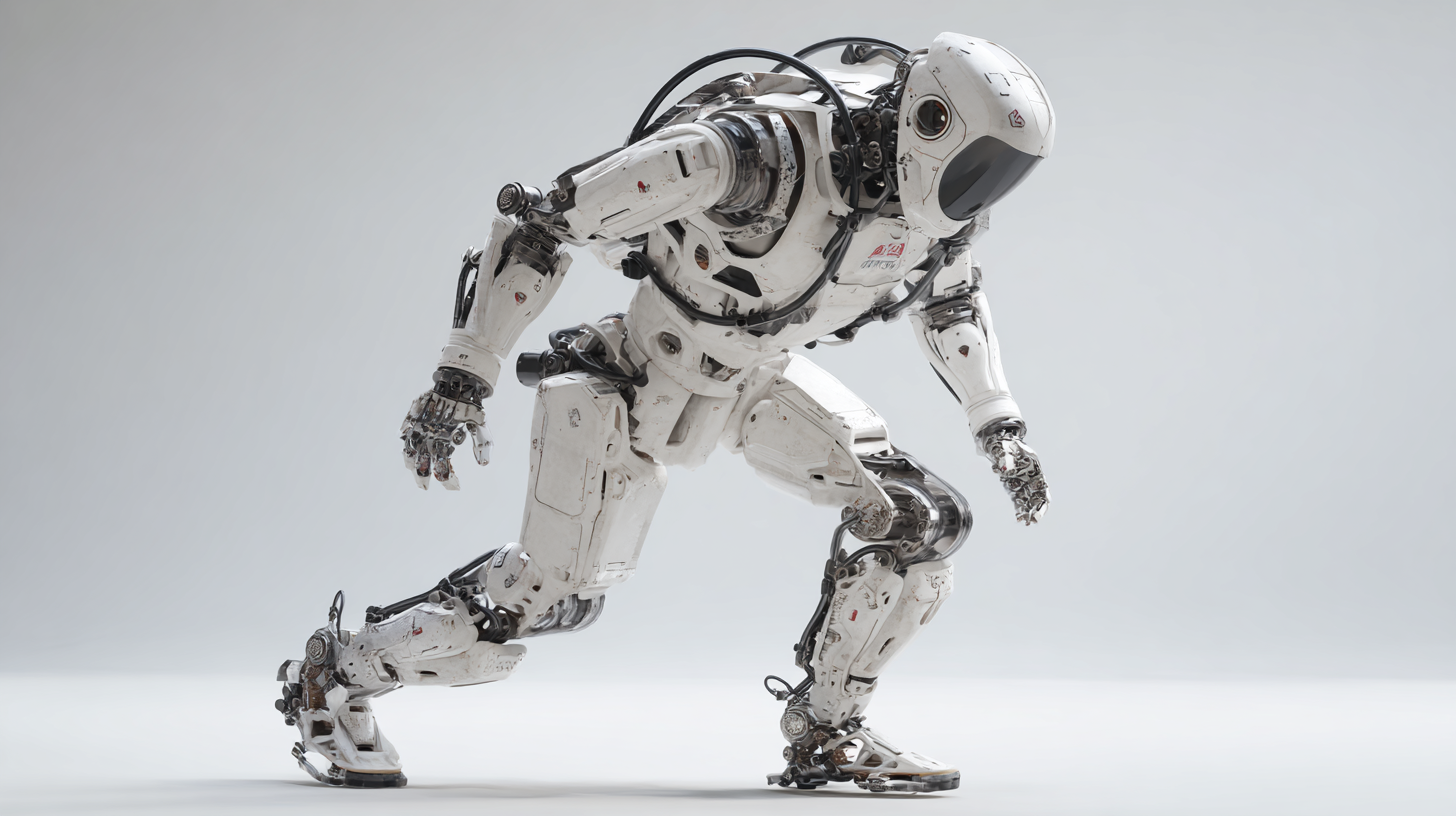As the global demand for innovative robotics continues to accelerate, China's advancements in 3D printed walking robots are setting the stage for a revolution in multiple industries. According to a recent report by MarketsandMarkets, the global robotics market is projected to reach $210 billion by 2025, with significant contributions from the field of additive manufacturing.
This surge underscores the importance of integrating cutting-edge 3D printing technology with robotic designs, enhancing capabilities and efficiency while reducing production costs. However, challenges remain in areas such as material selection, structural integrity, and mobility issues, necessitating a closer examination of the problems associated with the development of 3D printed walking robots.
By addressing these challenges, China not only aims to lead the global robotics market but also to showcase how innovative solutions can redefine operational paradigms across various sectors.

The rise of 3D printed walking robots in China is revolutionizing the robotics industry, marked by an impressive surge in innovation and production capabilities. According to a recent report from the International Federation of Robotics, the global market for 3D printing in robotics is projected to reach $2.9 billion by 2025, with China emerging as a pivotal player. This growth is primarily attributed to advancements in additive manufacturing technology that allow for rapid prototyping and customizations, enabling the creation of highly efficient walking robots for various applications, from industrial tasks to healthcare.
In 2021, China produced over 30% of the world's total robotic units, with a significant portion being 3D printed models that showcase lightweight structures and enhanced mobility. The integration of 3D printing facilitates not only design complexity but also cost-effectiveness, as it reduces material waste and shortens lead times. Moreover, research from IDTechEx revealed that the demand for walking robots in agriculture and logistics sectors is anticipated to double in the next three years, further stressing the importance of innovative manufacturing techniques like 3D printing in maintaining competitive advantages in these rapidly evolving markets. As such, the journey towards advanced robotics in China is just beginning, with 3D printing playing a critical role in shaping its future.
China's 3D printing industry has rapidly evolved, becoming a global leader in technological advancements that drive innovation in various sectors, particularly in robotics. The integration of 3D printing technology has revolutionized how walking robots are designed and manufactured, allowing for unprecedented levels of customization and efficiency. This technology enables engineers to create complex structures with intricate designs that were previously unattainable using traditional manufacturing methods.

The advancements in materials and printing techniques have played a crucial role in this transformation. With the development of lightweight, durable materials suitable for robotics, Chinese manufacturers are now able to produce walking robots that are not only functional but also optimized for performance. Innovations such as increased printing speed, enhanced scalability, and improved precision have significantly reduced production costs and time, positioning China at the forefront of the global robotics market. As these technologies continue to mature, they offer exciting possibilities for future applications, from healthcare to disaster relief, showcasing China's commitment to leading the world in 3D printed robotic solutions.
Chinese factories are at the forefront of a revolution in robot manufacturing, particularly with the advancement of 3D printing technologies. These factories leverage innovative processes to quickly design and produce walking robots that not only enhance efficiency but also reduce costs significantly. The ability to print complex parts on demand allows manufacturers to customize designs that cater to specific applications, making robotic solutions more versatile than ever before. This adaptability is crucial in industries ranging from healthcare to logistics, where precision and customization are paramount.

Furthermore, the integration of advanced materials in 3D printing opens up new avenues for durability and performance in walking robots. Chinese manufacturers are experimenting with lightweight yet robust materials that improve mobility while extending the lifespan of the robots. This ongoing innovation positions China as a leader in not only the production of robots but also in the research and development of groundbreaking manufacturing techniques. The ripple effect of these advancements is seen globally, as other countries look to China as a model for modernizing their own robotic manufacturing processes.
China's pioneering developments in 3D printed walking robots are making waves across various industries, showcasing the intersection of innovation and practicality. These robots, created through advanced additive manufacturing techniques, exemplify a unique fusion of design and functionality, allowing for rapid prototyping and customization tailored to specific industrial needs. In sectors such as agriculture, healthcare, and logistics, these robots are evolving from concept to reality, proving to be invaluable assets that enhance efficiency and productivity.
In agriculture, for instance, China’s 3D printed walking robots are revolutionizing tasks like planting and harvesting, enabling farmers to optimize their labor costs and improve yields. Meanwhile, in healthcare, these robots are being used to assist with patient mobility and rehabilitation, showcasing their versatility and ability to be adapted for different applications. As industries globally recognize the potential of these technologies, China is leading the charge, establishing itself as a powerhouse in the realm of robotic innovation and setting the stage for a more automated and efficient future across various sectors.
As we stand on the cusp of a technological revolution, the next generation of innovation in robotics is becoming increasingly apparent, particularly through the lens of China's advanced 3D printed walking robots. These machines, designed to navigate diverse terrains and perform complex tasks, showcase not only technological prowess but also a remarkable level of creativity and efficiency. The implications of these innovations extend far beyond robotics, promising enhanced solutions for industries ranging from healthcare to disaster response.
Tip: When exploring new technologies, consider the accessibility and adaptability of these advancements in various sectors. Engaging with experts can provide insights into how these innovations may alter existing processes and create new opportunities.
With ongoing research and development, the future of walking robots looks promising. As we develop increasingly sophisticated models, the potential applications could redefine numerous fields. For instance, robots equipped with AI-driven capabilities could assist in elder care or serve in emergency rescue missions, enhancing human capabilities and ensuring a safer environment.
Tip: Stay informed about the latest advancements in robotics by following industry leaders and participating in workshops. Networking with professionals can offer fresh perspectives and inspire innovative approaches to implementing new technologies effectively.
